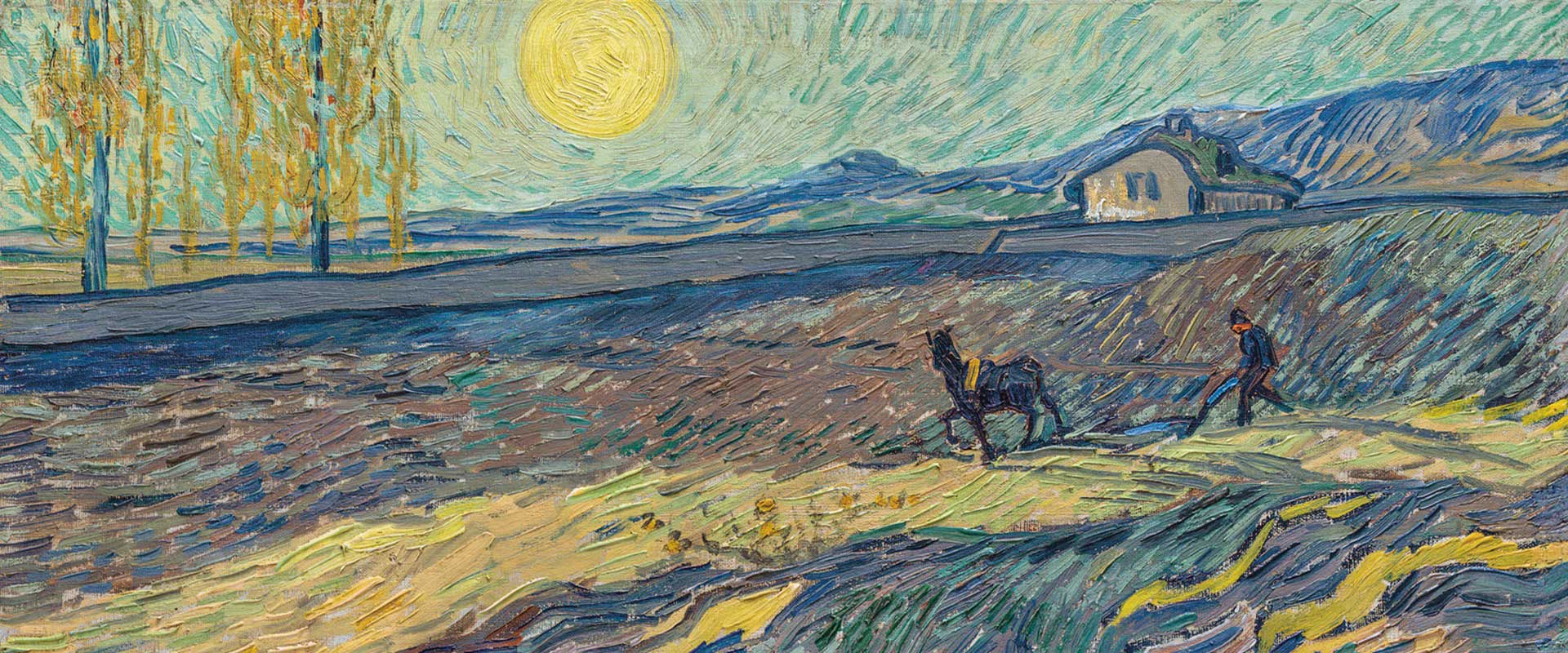Vincent van Gogh’s paintings are instantly recognisable—not just for their bold colours and swirling skies, but for the emotional depth that bursts from every canvas. From Starry Night to Sunflowers, his art feels alive, vibrating with texture, intensity, and meaning. But what makes Van Gogh’s style so compelling?
In this article, we’ll explore the brushwork, colour palette, and symbolism that define Van Gogh’s visual language, offering insight into how these elements shaped his legacy and revolutionised modern art.
Van Gogh’s Brushwork: Movement and Emotion on Canvas
A Painter’s Pulse in Every Stroke
Van Gogh’s brushwork was more than technique—it was a physical manifestation of emotion. He didn’t simply paint what he saw; he painted what he felt.
Key Features of His Brushwork:
- Expressive and rhythmic strokes: Often short, quick dashes or swirling movements
- Visible texture: Built up through thick applications of paint, also known as impasto
- Dynamic patterns: Especially in skies, foliage, and water—adding life to static scenes
In Starry Night, the sky is a living organism, with spirals and waves of paint conveying both turbulence and transcendence. The physicality of his brushwork makes the painting feel immediate and immersive.
Van Gogh once said, “I want to paint what I feel, and not what I see.” This sentiment is evident in every energetic stroke.
Colour Palette: Beyond Realism, Into Emotion
Bold, Contrasting, and Symbolic
Van Gogh’s colours were never meant to be realistic. They were tools for expressing mood, symbolism, and inner turmoil. Early in his career, his palette was earthy and muted. But after moving to Paris and discovering Impressionism and Japanese prints, his use of colour transformed.
Characteristics of Van Gogh’s Palette:
- High saturation: Vibrant yellows, bold blues, deep greens, and fiery reds
- Contrasting pairs: He often used complementary colours like blue and orange to create visual intensity
- Symbolic tones: Yellow for warmth and hope, green for vitality or sickness, blue for melancholy or calm
In Sunflowers, the dominance of yellows isn’t just a choice of subject—it’s an emotional gesture. The golden hues radiate warmth, joy, and sunlight. Yet in other works, like Wheatfield with Crows, the darker palette and oppressive sky suggest turmoil and mortality.
Symbolism in Van Gogh’s Work: Layers of Meaning
Art as a Mirror of the Soul
For Van Gogh, painting was never just decoration. His canvases often contained layers of symbolism, reflecting his spirituality, suffering, and search for purpose.
Recurring Symbols and Their Meaning:
- Cypress Trees: Representing death, eternity, or spiritual awakening. Seen in Starry Night and Wheatfields with Crows.
- Sunflowers: To Van Gogh, they symbolised gratitude, friendship, and vitality. He painted them while hoping to welcome Paul Gauguin to his “Yellow House” studio.
- The Night Sky: Stars often represented the afterlife, eternity, or the divine. He found solace in the night, writing that death might be like “going into a star.”
Even his numerous self-portraits hold symbolic weight—expressing introspection, identity, and vulnerability. They offer not vanity, but honesty.
Did Van Gogh Plan His Techniques?
While much of Van Gogh’s art feels spontaneous, he was actually thoughtful and methodical. His letters to his brother Theo reveal constant reflection on colour theory, composition, and brushwork.
He studied Delacroix, Millet, and Japanese ukiyo-e art, borrowing and adapting ideas with a personal twist. His choices were emotional, yes—but also intentional and deeply informed.
Legacy of Style: A Foundation for Modern Art
Why It Still Resonates Today
Van Gogh’s brushwork, colour use, and symbolic intent laid the groundwork for many 20th-century art movements:
- Expressionism: Artists like Edvard Munch adopted his emotionally charged style
- Fauvism: Matisse took inspiration from Van Gogh’s bold, non-natural colours
- Abstract Art: His disregard for realism gave later artists permission to break form
His style invites viewers to feel rather than merely observe—to engage with the artist’s inner world. That’s why his work continues to move us, generation after generation.
Experience Van Gogh’s World at Home
If you’re captivated by his vibrant style and want to bring that energy into your living space, explore our curated Vincent van Gogh wall art collection. From Almond Blossoms to The Starry Night, these prints offer a powerful connection to his emotional and visual legacy.
Conclusion
Van Gogh’s paintings are more than iconic—they are windows into a soul wrestling with light and darkness, joy and despair. His brushwork breathes life onto the canvas. His colour palette transcends realism to reveal emotion. His symbolism gives depth to even the simplest subjects.
Together, these elements form a style that is both deeply personal and universally felt. Vincent van Gogh didn’t just create art—he created connection.





